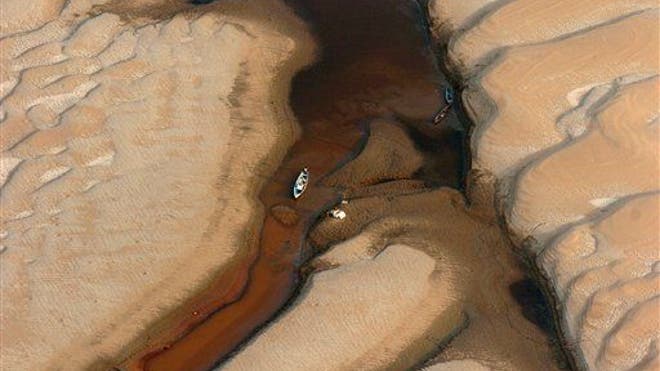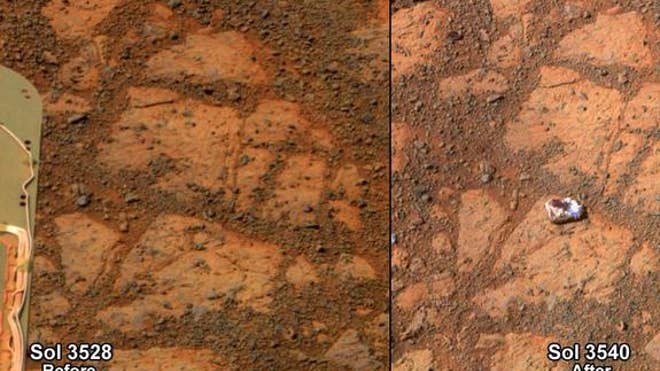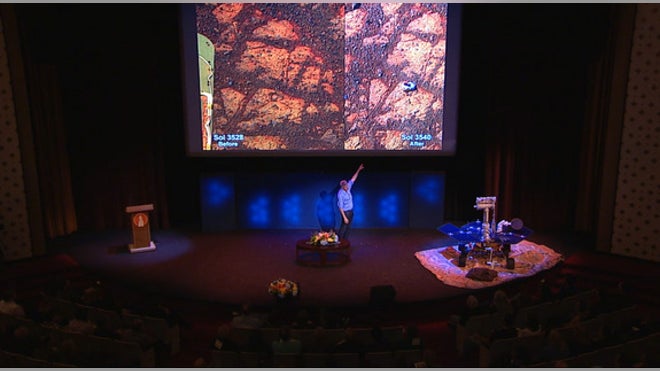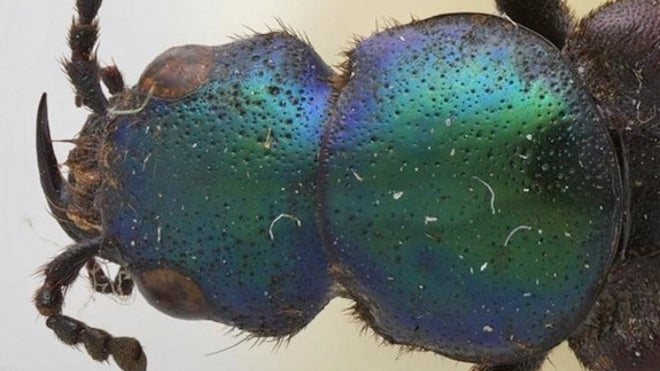TAMPA, Fla. – Marine biologists who study the Gulf of Mexico have a joke: The FBI, the DEA, the CIA -- none of them have anything on scientists when it comes to tracking the flow of secretive traffic between Cuba and the United States.
"They have not gotten the memo," quipped David Vaughan, with Sarasota-based Mote Marine Laboratory, whose international criminals are not spies but spiny lobsters -- as well as sharks and dolphins. "They are constantly breaking the travel embargo."
But one group of scientists isn't laughing any more, instead watching helplessly as they become the next punch line in marine biology.
Like all employees of Florida's public universities, scientists are prohibited by a law passed in 2006 from using state money for travel to Cuba.
More than most scientists, though, marine biologists see access to the communist island nation just 90 miles of Florida's shores as the difference between success and failure in their field.
'It is more difficult for us in Florida than any other state in the US to work with Cuba.'
- Donald Behringer, an assistant professor at University of Florida
Now, they're being left further behind as researchers from other states and from private institutions in Florida scramble to take advantage of new signs that Cuba relations are improving: an easing of travel restrictions by the White House, an agreement to cooperate in oil spills, even a tour by the University of Tampa baseball team.
Scientists already have begun collaborating with their counterparts in Cuba on research that could reverse the deterioration of coral reefs, prevent overfishing, and lead to better understanding of the gulf ecosystem.
They're doing work that could benefit Florida. They're just not from USF, the University of Florida or Florida State University.
"We are connected," said Donald Behringer, an assistant professor at UF's School of Forest Resources and Conservation & Emerging Pathogens Institute. "In order to understand our own ecosystem we also have to understand Cuba's.
"Unfortunately, it is more difficult for us in Florida than any other state in the United States to work with Cuba."
------------------------------
Senate Bill 2434, titled "Travel To Terrorist State," forbids money that flows through a state university -- including grants from private foundations -- to be used for travel to a nation on the U.S. list of state sponsors of terrorism. Cuba is on the list.
Sponsored by former Senate President Mike Haridopolos, the bill was passed in 2006 without a single no vote in either the Florida House or Senate then signed into law by Gov. Jeb Bush.
Florida is the only state in the country with such a prohibition.
Professors can use their own money to travel to Cuba for research, but only on personal time. And it's an expensive trip.
"I've been able to cobble together money for a plane ticket and go to Cuba a few times," said Behringer, "but it's hard. Faculty members from other states can use research money to pay their way. This puts Florida schools at a disadvantage."
An American who worked on a new oil spill cleanup protocol involving five gulf nations, including the U.S. and Cuba, said he is confident this agreement will pave the way for future collaboration on environmental issues between the U.S. and Cuba.
When that day comes, said Dan Whittle of the Environmental Defense Fund, protocols will be based on research projects already under way.
The oil spill agreement, brokered and advanced through meetings in Tampa, awaits publication by the Coast Guard before it becomes official.
"There is so much expertise at public universities in Florida," said Whittle, who directs the fund's work on marine and coastal ecosystems in Cuba. "It's a shame their hands are so tied."
------------------------------
Researcher Vaughan, director of tropical research with the private Mote Marine Laboratory, said new agreements and protocols will be an opportunity for U.S. scientists to make contributions to the environment they once thought impossible because of politics. Vaughan specializes in coral reefs and works with Cuban scientists.
Shut out of these new opportunities, Florida's public school professors fear losing out on more than a role in new discoveries. Florida may also lose out on attracting the brightest marine biology students.
The University of North Carolina, for example, has an annual student summer expedition to Cuba to study the coral reefs off its shores. The University of Tampa has a marine biology department and though it has no plans to visit Cuba, other departments at the private school and the baseball team have.
"Obtaining knowledge is always important," said Frank Muller-Karger, a professor at the USF College of Marine Science. "Sure, we can learn what another researcher discovered in Cuba. But top students want to develop knowledge."
Proponents of the 2006 act said at the time that any travel to Cuba financially supports an oppressive regime.
Gov. Rick Scott, asked about the lingering impact on Florida universities, echoed that sentiment in a statement to the Tribune last week.
"Governor Scott is committed to growing opportunities so Florida families can succeed and live the American Dream," said John Tupps, Scott's deputy press secretary, "and he is firmly opposed to the Castro regime that works to oppress such opportunity and freedom."
------------------------------
State Sen. Arthenia Joyner, a Tampa Democrat whose district includes the University of South Florida, was part of the unanimous vote in 2006 but says now that times have changed.
"It's a different world today," Joyner said. "We need to acknowledge that."
There are no signs today of efforts to overturn the law, even at the university level.
USF issued this statement to The Tampa Tribune last week: "The University of South Florida stands for the core values of academic freedom and the open exchange of knowledge and ideas in the least restrictive environment possible. The current restrictions were enacted in the political process and we recognize that is where they will be resolved."
Of the six marine biology professors from state universities who were asked for comment on the issue, all agreed the law hurts their institutions, but only Behringer from UF and USF's Muller-Karger would speak on the record against it.
The others said they were concerned about getting involved in politics.
Muller-Karger had this response: "The reaction you describe shows that people are actually quite worried about how the state may interpret their interest in working these issues, or just worried stiff about speaking about a binding Florida law."
He added, "This has nothing to do with politics. It is about knowledge, managing our resources and doing what is best for our environment."
The law forbidding state money from funding trips to Cuba affects other disciplines.
Those studying Latin American art, music, language, politics, geology and history could benefit from visiting the Communist nation. But marine biology stands out as a field where advances in research stand to directly benefit the state of Florida more than any other region on earth.
"So no one else is as affected by what goes on in Cuban waters than Florida" said Muller-Karger.
Marine biologists call it "connectivity."
------------------------------
For instance, spiny lobsters served in Tampa restaurants could have hatched from eggs laid in Cuba and made their way to Florida in the Gulf's currents. Much of the snapper and grouper that supports Florida's fish industry could also originate in or pass through Cuban waters.
To better understand this marine life, scientists track their travels between the Yucatan Peninsula, Mexico, Florida and Cuba. Learning where each species originates can help in reaching agreements on fishing limits and other protective measures.
Still, coral reefs are the top priority for U.S. marine biologists working with Cuba.
Scientists predict that by 2050, all coral reefs will be in danger from pollution and changes in water temperature and sea levels.
Natural reefs in Martin, Palm Beach, Broward and Miami-Dade counties generate an estimated $3.4 billion in income a year through recreation, education and science.
More importantly, reefs protect coasts by reducing wave energy from storms and hurricanes. And as home to more than 4,000 species of fish and countless species of plants, coral reefs support some 25 percent of all known marine species.
Whether a coral reef is off the shores of Cuba or the U.S., the waters they share suffers from its degradation. In addition, coral larvae from Cuba finds its way to reefs in Florida and vice versa.
So if a reef in Cuba disappears, it has a ripple effect, said John Bruno, a professor in the Department of Biology at the University of North Carolina.
"If the coral babies in Florida come from Cuba," Bruno said, "then that would be a big problem for the state."
------------------------------
Bruno's students travel annually to Cuba and the reef they seek out most is the pristine "Gardens of the Queen," or Jardines de la Reina.
Most of Cuba's reefs are in decline, said Vaughan of Mote Marine, but "la Reina" remains healthy.
He believes U.S. researchers can help other reefs by learning its secret to survival.
Cuba, in turn, can benefit from more advanced U.S. technology, said Whittle with the Environmental Defense Fund.
A forum was established in 2007 to formalize this kind of cooperation -- the Tri-National Workshop, attended by top marine biologists from Mexico, Cuba and the U.S.
They meet at least once a year on issues affecting turtles, sharks, dolphins, coral reefs, fisheries and marine protected areas.
"We can learn more by working with other country's scientists," Whittle said. "We share their knowledge, we share ours, and we work together to find out how we can help one another."
Mote Marine, the Environmental Defense Fund and the Nature Conservancy are private, U.S.-based participants.
Florida's public universities are not at the table. Neither is U.S., making it the only of the three nations without government involvement.
"We're working together," Vaughan said, "to find out answers to things we could not know as individuals."
 A model of the interstellar magnetic fields which would otherwise be straight -- warping around the outside of our heliosphere, based on data from NASA's Interstellar Boundary Explorer. The red arrow shows the direction in which the solar system moves through the galaxy.NASA/IBEX/UNH
A model of the interstellar magnetic fields which would otherwise be straight -- warping around the outside of our heliosphere, based on data from NASA's Interstellar Boundary Explorer. The red arrow shows the direction in which the solar system moves through the galaxy.NASA/IBEX/UNH Cosmic ray intensities (left) compared with predictions (right) from NASA's IBEX spacecraft. The similarity between these observations and predictions supports the local galactic magnetic field direction determined from IBEX observations made from particles at vastly lower energies than the cosmic ray observations shown here. The blue area represents regions of lower fluxes of cosmic rays. The gray and white lines separate regions of different energiesâlower energies above the lines, high energies below.Nathan Schwadron/UNH-EOS
Cosmic ray intensities (left) compared with predictions (right) from NASA's IBEX spacecraft. The similarity between these observations and predictions supports the local galactic magnetic field direction determined from IBEX observations made from particles at vastly lower energies than the cosmic ray observations shown here. The blue area represents regions of lower fluxes of cosmic rays. The gray and white lines separate regions of different energiesâlower energies above the lines, high energies below.Nathan Schwadron/UNH-EOS In this Oct. 4, 2005 file photo, a boat tries to make its way through a section of the Amazon River suffering from lower water levels near Uricurituba in northern Brazil.AP Photo/A Critica, Euzivaldo Queiroz,File
In this Oct. 4, 2005 file photo, a boat tries to make its way through a section of the Amazon River suffering from lower water levels near Uricurituba in northern Brazil.AP Photo/A Critica, Euzivaldo Queiroz,File This before-and-after pair of images of the same patch of ground in front of NASA's Mars Rover Opportunity 13 days apart documents the arrival of a strange, bright rock at the scene. The rock, called "Pinnacle Island," is seen in the right imagNASA/JPL-Caltech/Cornell Univ./Arizona State Univ.
This before-and-after pair of images of the same patch of ground in front of NASA's Mars Rover Opportunity 13 days apart documents the arrival of a strange, bright rock at the scene. The rock, called "Pinnacle Island," is seen in the right imagNASA/JPL-Caltech/Cornell Univ./Arizona State Univ. Feb. 4, 2014: This image from NASA's Mars Exploration Rover Opportunity shows where a rock called "Pinnacle Island" had been -- before it appeared in front of the rover in early January 2014.NASA/JPL-Caltech/Cornell Univ./Arizona State Univ.
Feb. 4, 2014: This image from NASA's Mars Exploration Rover Opportunity shows where a rock called "Pinnacle Island" had been -- before it appeared in front of the rover in early January 2014.NASA/JPL-Caltech/Cornell Univ./Arizona State Univ. A comparison of two raw Pancam photographs from sols 3528 and 3540 of Opportunity's mission (a sol is a Martian day). Notice the "jelly doughnut"-sized rock in the center of the photograph to the right. Minor adjustments for brightness and contNASA/JPL-Caltech
A comparison of two raw Pancam photographs from sols 3528 and 3540 of Opportunity's mission (a sol is a Martian day). Notice the "jelly doughnut"-sized rock in the center of the photograph to the right. Minor adjustments for brightness and contNASA/JPL-Caltech Steve Squyres, lead scientist for NASA's Mars rover Opportunity, points at a strange rock found by the rover on Jan. 8, 2014, where earlier there had been nothing, during a Jan. 16 presentation. The rock has been named "Pinnacle Island."NASA/JPL
Steve Squyres, lead scientist for NASA's Mars rover Opportunity, points at a strange rock found by the rover on Jan. 8, 2014, where earlier there had been nothing, during a Jan. 16 presentation. The rock has been named "Pinnacle Island."NASA/JPL Satellite imagery from May 2013 of the Yongbyon Nuclear Scientific Research Center in North Korea.DigitalGlobe
Satellite imagery from May 2013 of the Yongbyon Nuclear Scientific Research Center in North Korea.DigitalGlobe The Kalinin nuclear power plant in Russia.IAEA
The Kalinin nuclear power plant in Russia.IAEA Feb. 13, 2014: A preserved wooden sarcophagus that dates back to 1600 BC, when the Pharaonic 17th Dynasty reigned, in Egypt.AP Photo/Egypt's Supreme Council Of Antiquities
Feb. 13, 2014: A preserved wooden sarcophagus that dates back to 1600 BC, when the Pharaonic 17th Dynasty reigned, in Egypt.AP Photo/Egypt's Supreme Council Of Antiquities Feb. 13, 2014: A preserved wooden sarcophagus that dates back to 1600 BC, when the Pharaonic 17th Dynasty reigned, in Egypt.AP Photo/Egypt's Supreme Council Of Antiquities
Feb. 13, 2014: A preserved wooden sarcophagus that dates back to 1600 BC, when the Pharaonic 17th Dynasty reigned, in Egypt.AP Photo/Egypt's Supreme Council Of Antiquities Feb. 13, 2014: Egyptian men digging up a preserved wooden sarcophagus that dates back to 1600 BC, when the Pharaonic 17th Dynasty reigned, in the ancient city of Luxor, Egypt.AP Photo/Egypt's Supreme Council Of Antiquities
Feb. 13, 2014: Egyptian men digging up a preserved wooden sarcophagus that dates back to 1600 BC, when the Pharaonic 17th Dynasty reigned, in the ancient city of Luxor, Egypt.AP Photo/Egypt's Supreme Council Of Antiquities
 A close up of the colorful beetle species Darwinilus sedarisi.Natural History Museum (London)
A close up of the colorful beetle species Darwinilus sedarisi.Natural History Museum (London)